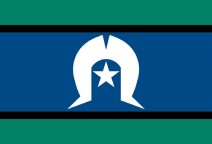All businesses operate with some form of risk. Risks can come from within the business or from external circumstances.
All tourism businesses are subject to Occupational Health and Safety legislation. This means you have a duty of care to protect your staff and customers.
Understanding your duty of care will help you in managing a crisis. You need to identify the range of possible risks for your business and how you would go about responding to them.
Planning for a crisis
Planning for a crisis gives you the opportunity to:
- acquire resources to respond effectively in a crisis
- implement processes to manage risk
- train staff so that they are confident they know what to do during a crisis
Tip
When developing a risk management plan, gather a small team of people who represent key areas of your business to work through the steps. It may also be useful to consult with your peak industry sector association, local council and local emergency services.
Steps in managing risk
A risk management plan involves the following steps.
Step 1: Understand your business
To manage risk in your business you need to first understand how your business operates. This means understanding the essential components that make your business operate smoothly and successfully.
Things to consider:
- suppliers or systems important for your business
- technical systems your business relies on
- important records or information that are essential for your business
- security systems that require codes or passwords, or keys to access important property, equipment or information
- particular people or other businesses that you rely on to survive
- legal or other obligations that you must comply with as part of your business practice.
Based on the above examples, compile a list of all the essential things you need to operate your business.
Step 2: Identify the risks
Natural hazards will occur no matter where you operate in Victoria. An important stage in the risk management process is to identify the risks that are relevant to your business.
Some parts of the state are more likely to be affected by certain types of hazards than others. In Victoria, regular emergencies such as bushfires, floods and storms
can have significant impacts on the tourism industry.
It's important to note that events such as a bushfire occurring a fair distance from your business can still cause a significant reduction in trade. Your risk management plan needs to identify how you would manage this risk.
Using the Risk Management Plan template, list all the potential risks your business may be exposed to.
Completing the Risk Management Plan
Refer to the Crisis Events and Risk for a list of crisis events that could have an indirect or direct impact on your business.
Ask yourself the following questions:
- What harmful incidents could occur within my business?
- What types of natural or human disasters outside of my business could prevent or hinder my business from operating?
- What other events have occurred or could occur nearby or in the region that could have a major impact on my business?
Think about the:
- physical or environmental hazards within your business
- physical or environmental hazards outside of your business
- unexpected events – power outages, blocked water pipes, gas leaks, supplier problems, building damage.
Get advice
Local councils
Talk to your local council to find out the risks that are relevant to your area.
Each council will have a Municipal Emergency Management Plan that identifies the risks in your area.
Emergency services
If your area is prone to flooding or bushfires, talk to the relevant emergency service agency such as the Country Fire Authority (CFA) or the Victorian State Emergency Service (SES) to find out how to best prepare your business.
Emergency Management Victoria
Emergency Management Victoria has developed an Emergency Risks in Victoria Report that can assist you in assessing the emergency risks in Victoria and how these risk may affect your tourism businesses.
Find out more about assessing a broader range of risks relating to your business, such as financial, political and employee risks at Evaluate business risk.
Step 3: Assess the risks
After you have identified the possible risks to your tourism business using the Risk Management Plan template, the next step is to estimate the likelihood of these events occurring and the level of impact it will have on your business if they were occur.
It is valuable to consider your approach to risk – are you a risk taker or risk avoider? This will determine which risks you will accept, and which risks you will address.
Each business will have a different approach to risk:
- you may be highly risk-averse and want to spend the time and resources on addressing almost all possible risks
- you may be prepared to accept that some risks are unlikely to occur and are perhaps too costly to address.
Step 4: Create a plan to address the risks
Plan how you will address each risk
- consider what actions are needed to be taken to reduce and prepare for each risk identified
- set a timeline/date for when these actions are to be completed
- nominate and discuss with staff responsible for completing the actions
- identify the outcome of the action once completed (provide proof of action).
Step 5: Update your plan regularly
Review and update your risk management plan annually to keep it current. Your plan may require a more regular update if an emergency occurs or there is a change in your operating environment.
Staff should be trained on the actions you've identified them in. Operations manuals and position descriptions can also be updated to reflect the actions in your risk management plan.
Step 6: Make a list of important contacts and information
Make a list of important contacts and information for use in the event of an emergency.
Tip
Talk to experts such as your local council or emergency services agencies if you are unsure how realistic your risk assessment has been.


